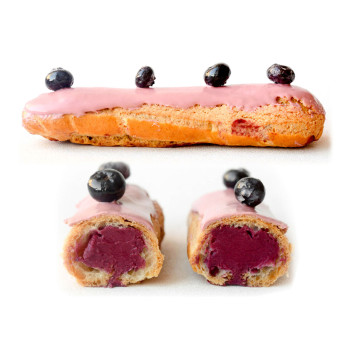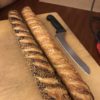Canele, Macaron, Kouign-amann are not just words French people get angry at us for misspelling, they’re also all pastries that have become trendy in the past few years, as American food fans explored the world of tasty baked things. Meanwhile the eclair — the original trendy French pastry — has been overlooked… until now.
Niko Triantafillou covers desserts for the blog Serious Eats and recently he wrote a story about the eclair renaissance. When Brendan met with Niko, he first asked what “eclair” means.

Niko Triantafillou: It’s the French word for “flash of lightning,” so…
Brendan Francis Newnam: Really? Why is it named after a flash of lightning?
Niko Triantafillou: Nobody knows. The encyclopedia of French Cooking, the “Larousse Gastronomique,” doesn’t have a good explanation. I haven’t ever found one.
Brendan Francis Newnam: Well, that’s a pretty cool name, and an exciting name for a pastry that, until recently, hasn’t been very exciting. It’s interesting. On the one hand, it’s one of the most popular French pastries in America, but among foodies, it’s kind of fallen off. Can you tell me the story of the eclair in the United States, as far as you know it?
Niko Triantafillou: Eclairs have been available in the United States for many years, at least 30 years, by my recollection, growing up in New York City in the ’70s. You could even get them frozen in supermarkets across the U.S.
Brendan Francis Newnam: And yet, during this recent food renaissance, people have kind of overlooked the eclair.
Niko Triantafillou: Yeah. The eclair was just a little too basic. It just had this custard inside and chocolate on top.
I think the biggest reason for the eclair getting popular again is the proliferation of French bakeries in New York City — and I’m not talking just about any French bakeries, I’m talking about the best French bakeries. Epicerie Boulud, Francois Payard Bakery, Maison Kayser — they’ve all opened three, four, five additional patisseries in the last two years alone.
Brendan Francis Newnam: So, now there’s competition, and so they need to find a competitive advantage.
Niko Triantafillou: Absolutely. It’s driven innovation. It’s not unlike a lot of other fields outside pastry. So, you’re starting to see people say, boy, what are they doing in Paris? Just like the macaron five or 10 years ago, we were just behind Paris. And the same exact thing is happening with eclairs.
Brendan Francis Newnam: And so, there is a pastry arms race happening (both laugh), and people, I guess they’ve run out of exotic pastries, and so they look to the eclair, and they’ve been fancying them up a little bit.
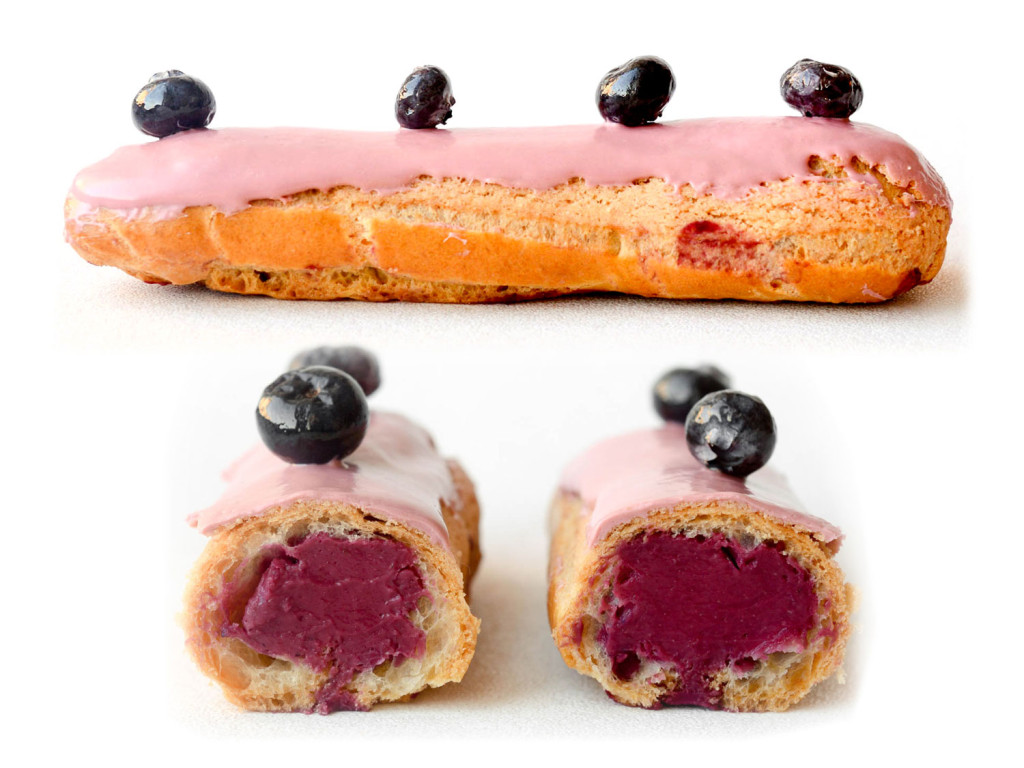
Niko Triantafillou: Yeah. One thing is that the eclair is a familiar container, of which they can deliver new pastry ideas and exciting new experiments. Almost everyone, most consumers in New York know about an eclair.
It’s a great vehicle to say, “You know, I’m going to try this new pastry cream,” or “I’m going to try torching some meringue on top, like they did at Lafayette.”
So, It’s really a great canvas to deliver something that’s a little bit experimental, but then the consumer is not scared because it’s an eclair. It’s familiar.
Brendan Francis Newnam: Well, look. We’re looking at some eclairs right now.
Niko Triantafillou: Yeah, these are beautiful.
Brendan Francis Newnam: I stopped by Epicerie Boulud, which is — you write about in the article — and I just got a chocolate eclair and a caramel eclair, nothing too exotic.
Then I also stopped by the Eclair Bakery, and these eclairs look like beautiful boats from magical Candyland. There’s a blueberry eclair with blueberries on top. There’s a red velvet eclair, which has chunks of cake on top.
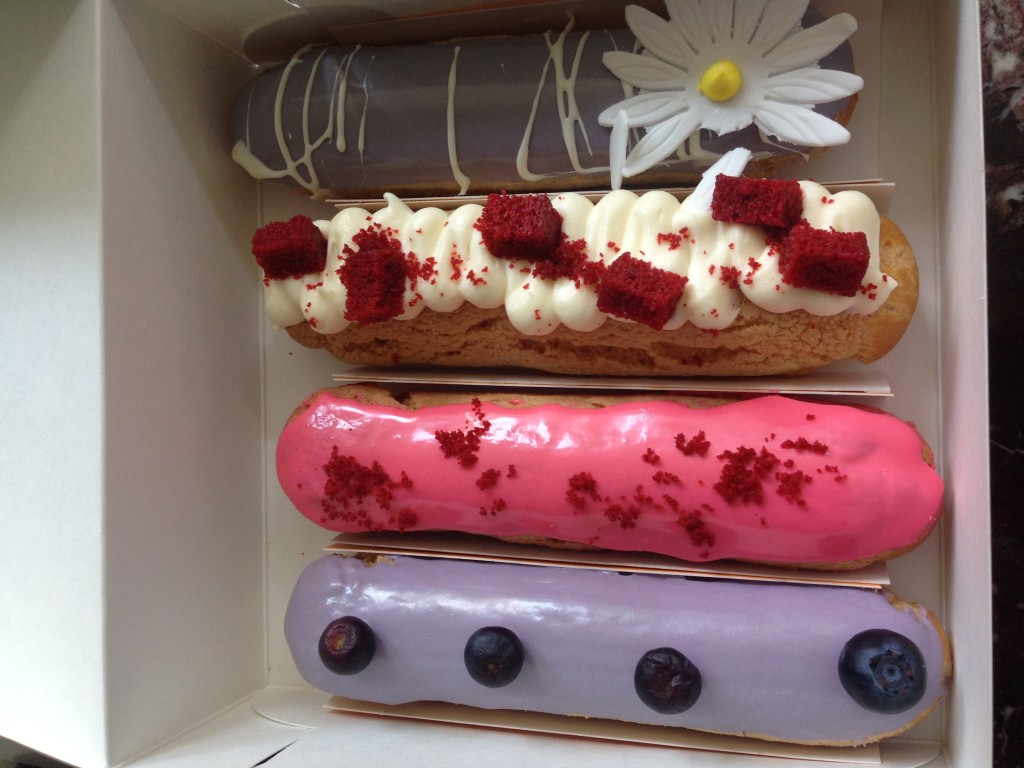
I have a question: are the French OK with this? I know there’s a French chef at the Eclair Bakery. It seems that they’re so uptight about some things, and yet, in this kind of new world of French pastries being popular, they’re like, “Go ahead. Put bacon in it. We don’t care.”
Niko Triantafillou: Yeah, that’s a good question. Bacon might be a line that they wouldn’t want us to cross, but in terms of the French being OK with it — one of the most influential French pastry chefs, Christophe Adam, his thing is that he’s got eclair-only pastry shops in Paris. He’s got at least three of them, and they only sell eclairs.
And there’s absolutely no rules, everything is on the table. So, for example, on one of his eclairs, he’s got a piece of white chocolate on top and he’s got a photograph imprinted into the chocolate, that you can eat, of the Mona Lisa.
Brendan Francis Newnam: It sounds like Paris beat us to the punch by making these crassly commercial. Maybe we can have a Jennifer Lawrence eclair or a Scarlett Johansson eclair.
Niko Triantafillou: (Laughs) I would be shocked if that’s not in the works.
Brendan Francis Newnam: So, tell me, what type of pastry is this, technically?
Niko Triantafillou: Eclairs are made with pate a choux, which is just four ingredients. It’s butter, water, flour and eggs. And the way they rise is the steam that’s generated from the moisture content. So there’s no yeast, there’s no leavening like with bread. And that’s true for every single eclair. It’s not an eclair if it’s not using pate a choux pastry.
Brendan Francis Newnam: What makes an eclair is that pastry tube, filled with some sort of cream, and then topped with some sort of topping.
Niko Triantafillou: That’s it.
Brendan Francis Newnam: Let’s eat some of these. Do any of these catch your eye? What are you interested in?
Niko Triantafillou: This one has got red velvet chunks. It’s also got the crackling topping, and it’s also got a pastry cream. I’m not sure what that is on top, so I feel like maybe we should try that.
Brendan Francis Newnam: You try that, and I’m going to try this classic caramel one right here.
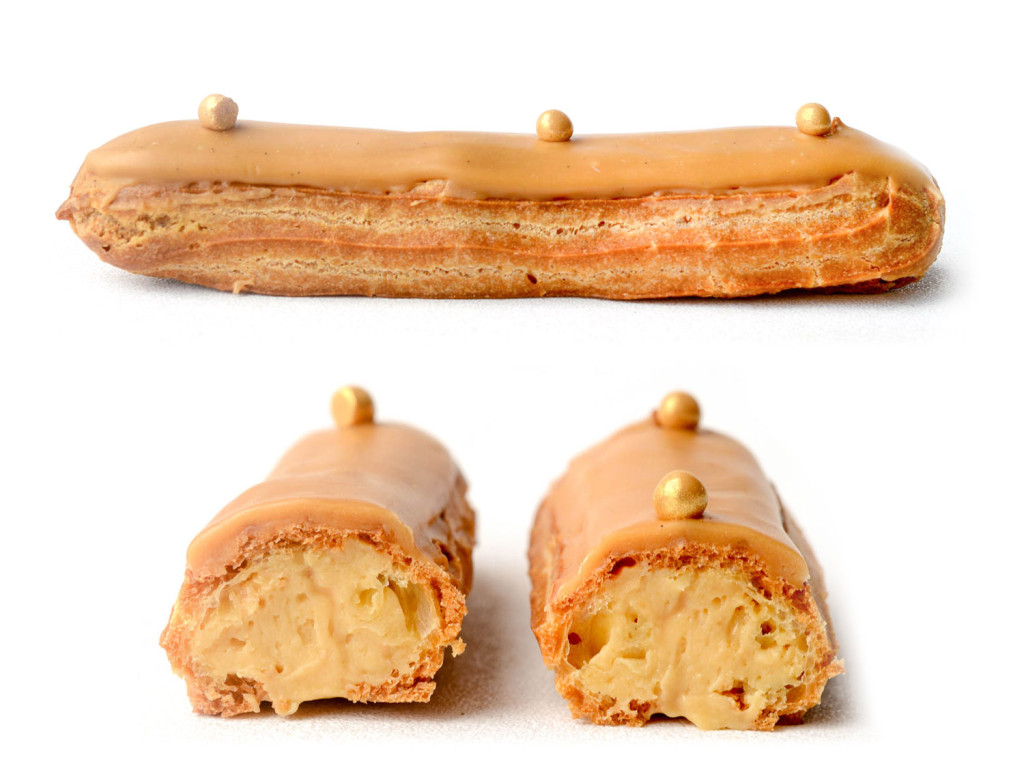
Brendan Francis Newnam: (Tastes food) Mmm. Mmm hmm. So, it is really just a delivery system for the wonderful caramel cream here.
Niko Triantafillou: Yes. And this one has got some type of cheesecake filling.
Brendan Francis Newnam: What makes this different — is the Twinkie the distant cousin of the eclair?
Niko Triantafillou: Wow, that is — I’ve never thought of that, but obviously, it’s the same shape. I think a Twinkie has a bit more of a shelf life. A good eclair, you really wouldn’t want to eat one that’s more than six hours old.
A Twinkie, I think, you couldn’t tell the difference between a, you know…
Brendan Francis Newnam: I think it needs to sit for six years before it really gets peak. That’s peak Twinkie.
